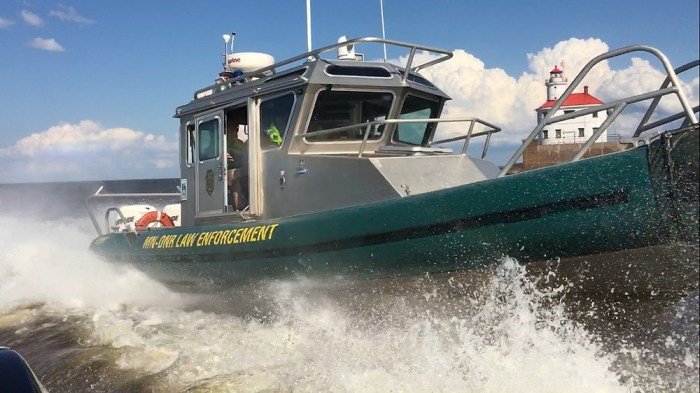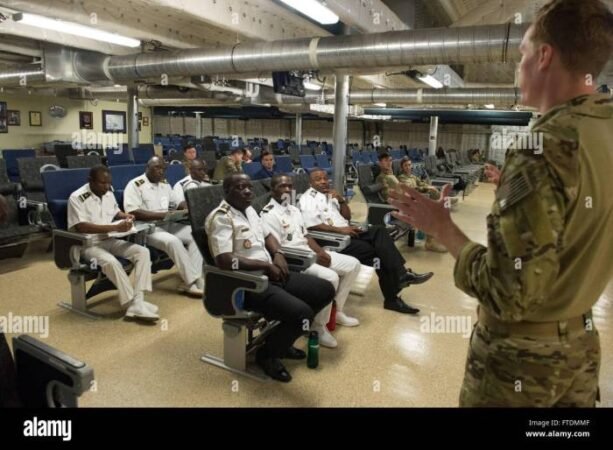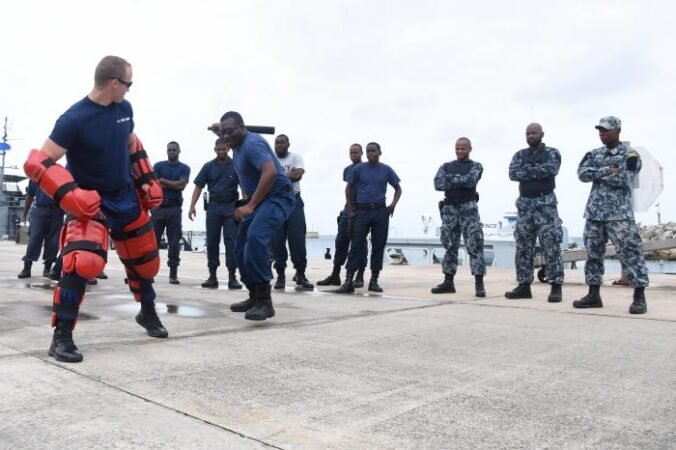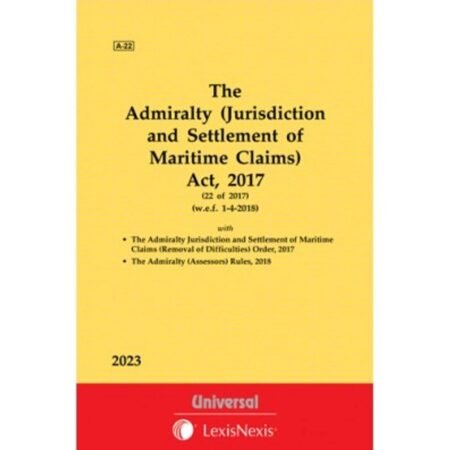
- Introduction to Maritime Law Enforcement in Charleston, South Carolina
- Charleston’s Maritime Law Enforcement Academy
- Recruitment and Selection Process at the Academy
- Equipment and Technology Used by Charleston Maritime Law Enforcement
- Collaboration and Partnerships in Maritime Law Enforcement
- Challenges and Future Trends in Charleston Maritime Law Enforcement
- Ultimate Conclusion
- Top FAQs
Charleston, South Carolina, a city steeped in maritime history, faces unique challenges in protecting its harbor and waterways. This necessitates a robust maritime law enforcement presence, and the Charleston Maritime Law Enforcement Academy plays a crucial role in training the next generation of officers to confront these challenges head-on. From combating drug trafficking and human smuggling to navigating the complexities of environmental protection within a dynamic coastal environment, the academy’s curriculum equips graduates with the skills and knowledge essential for success in this demanding field.
The academy’s training program is not just theoretical; it’s a rigorous blend of classroom learning and practical exercises, simulating real-world scenarios encountered on the water and in the port. The integration of advanced technologies, from sophisticated surveillance systems to cutting-edge communication tools, ensures that graduates are prepared to utilize the latest equipment and techniques in their daily operations. This comprehensive approach ensures that Charleston’s maritime law enforcement remains at the forefront of protecting its vital waterways.
Introduction to Maritime Law Enforcement in Charleston, South Carolina

Charleston, South Carolina, boasts a rich maritime history deeply intertwined with its law enforcement efforts. The city’s strategic location and significant port activity have necessitated a robust maritime security presence for centuries, evolving from early customs enforcement to the sophisticated agencies operating today. Understanding this history and the unique challenges of the Charleston harbor is crucial to appreciating the complexities of modern maritime law enforcement in the area.
Charleston’s geography presents unique challenges for maritime law enforcement. The harbor’s intricate network of waterways, including the Ashley and Cooper Rivers, creates a complex environment to patrol. Shallow areas, narrow channels, and numerous bridges restrict maneuverability for larger vessels, while the extensive coastline offers numerous secluded areas that can be exploited for illicit activities. Furthermore, the confluence of fresh and saltwater creates variable currents and tidal patterns that can hinder pursuit and evidence collection. These factors necessitate specialized training and equipment for effective enforcement.
Types of Maritime Crimes in Charleston Harbor and Surrounding Waters
The Charleston harbor and its surrounding waters are susceptible to a range of maritime crimes. Smuggling, particularly of drugs and undocumented persons, is a persistent concern, leveraging the harbor’s extensive network of waterways and proximity to international shipping lanes. Illegal fishing and wildlife trafficking also pose significant threats, impacting the region’s ecological balance and economy. Furthermore, theft from vessels, marine pollution, and violations of maritime regulations, such as those related to safety and navigation, are common occurrences requiring consistent monitoring and enforcement. The sheer volume of maritime traffic passing through the Charleston port also increases the risk of piracy and other criminal activities targeting cargo and vessels. Effective law enforcement requires a multi-agency approach, combining resources and expertise to address these diverse challenges.
Charleston’s Maritime Law Enforcement Academy

The Charleston Maritime Law Enforcement Academy provides comprehensive training for officers tasked with upholding the law within South Carolina’s coastal waters and ports. Its rigorous curriculum prepares graduates to effectively address the unique challenges of maritime law enforcement, ranging from drug interdiction and smuggling to search and rescue operations. The academy’s commitment to excellence ensures its graduates are highly skilled and prepared for the demands of this critical field.
Curriculum and Training at the Charleston Maritime Law Enforcement Academy
The academy’s curriculum blends theoretical knowledge with extensive hands-on training. Core subjects build a foundational understanding of maritime law, navigation, vessel operation, and emergency response procedures. Specialized modules delve into areas like maritime investigation techniques, evidence collection, and the specific legal frameworks governing maritime activities. The curriculum is constantly updated to reflect evolving threats and technological advancements within the maritime environment.
Practical Exercises and Simulations
The academy utilizes a variety of practical exercises and simulations to reinforce theoretical learning. These include realistic scenarios involving vessel boarding, suspect apprehension, evidence processing, and search and rescue operations. Simulations are often conducted on specialized training vessels that replicate the conditions encountered at sea. For example, trainees might participate in a simulated drug smuggling interdiction exercise, where they must board a suspect vessel, conduct a search, and apprehend individuals involved in illegal activity. Another simulation might involve responding to a distress call, navigating to the location of a distressed vessel, and performing a rescue operation. These practical exercises develop crucial teamwork and decision-making skills under pressure.
Technology in Maritime Law Enforcement Training
Technology plays a significant role in the academy’s training program. Trainees receive instruction in the use of advanced navigation systems, radar technology, sonar equipment, and various communication systems employed in maritime law enforcement. Simulators provide realistic training environments for practicing vessel handling and navigation in various weather conditions and challenging environments. Furthermore, the academy incorporates virtual reality (VR) and augmented reality (AR) technologies to enhance training effectiveness, allowing trainees to experience complex scenarios in a safe and controlled setting. For example, trainees might use VR to practice boarding a vessel in rough seas or utilize AR to overlay critical information onto real-world scenes during a simulated search operation.
Curriculum Overview
The following table provides a detailed breakdown of the academy’s curriculum. The duration of each module may vary based on the specific training needs.
| Module Name | Description | Duration | Key Skills Developed |
|---|---|---|---|
| Maritime Law and Regulations | Covers federal and state laws governing maritime activities, including jurisdiction, evidence collection, and legal procedures. | 4 weeks | Legal knowledge, procedural understanding, report writing. |
| Navigation and Seamanship | Provides instruction in chart reading, navigation techniques, vessel handling, and safe boating practices. | 6 weeks | Navigation skills, vessel operation, safety procedures. |
| Vessel Boarding and Search Techniques | Teaches safe and effective techniques for boarding vessels, conducting searches, and apprehending suspects. | 4 weeks | Boarding techniques, search and seizure procedures, tactical skills. |
| Maritime Investigation | Covers evidence collection, crime scene processing, and investigative techniques specific to maritime environments. | 5 weeks | Investigative techniques, evidence handling, report writing. |
| Emergency Response and Rescue Operations | Focuses on search and rescue techniques, medical first aid, and emergency response procedures at sea. | 3 weeks | Rescue techniques, first aid, emergency response procedures. |
| Advanced Maritime Technology | Provides training on advanced navigation systems, radar, sonar, and communication technologies used in maritime law enforcement. | 2 weeks | Technological proficiency, data analysis, equipment operation. |
Recruitment and Selection Process at the Academy
The Charleston Maritime Law Enforcement Academy employs a rigorous recruitment and selection process designed to identify and attract highly qualified candidates capable of fulfilling the demanding role of a maritime law enforcement officer. This process prioritizes not only physical and mental capabilities but also ethical considerations and a commitment to public service. The aim is to cultivate a professional and effective force capable of safeguarding Charleston’s waterways and upholding the law.
The application process begins with a detailed online application, followed by a series of assessments designed to evaluate candidates across a range of critical areas. Successful applicants then progress through physical fitness tests, background checks, and comprehensive interviews before receiving a final offer of admission. The entire process is structured to ensure that only the most suitable candidates are selected for training.
Key Qualifications and Attributes
Prospective maritime law enforcement officers must meet several stringent requirements. These include possessing a high school diploma or GED equivalent, possessing a valid driver’s license, and meeting specific age and vision requirements. Beyond these basic qualifications, the academy seeks candidates who demonstrate strong physical fitness, excellent communication and interpersonal skills, the ability to work effectively under pressure, and a commitment to ethical conduct. Problem-solving skills, decision-making capabilities, and a demonstrated ability to work as part of a team are also highly valued. Candidates with prior military or law enforcement experience are often viewed favorably, though not required. Furthermore, candidates must pass a thorough background investigation that includes a polygraph examination and a comprehensive review of their criminal history, driving record, and credit history.
Comparison with Other Academies
While specific details of recruitment processes vary across different maritime law enforcement academies nationwide, the Charleston Academy’s process aligns with many common industry standards. Most academies prioritize physical fitness testing, background checks, and psychological evaluations. However, the specific tests and assessment tools employed can differ. For example, some academies might use different physical fitness standards or incorporate more advanced psychological assessments. The Charleston Academy’s emphasis on ethical conduct and community engagement may distinguish it from some other academies, reflecting a specific focus on building strong relationships with the Charleston community. The length of the application process can also vary, with some academies completing the process more quickly than others.
Recruitment and Selection Process Flowchart
The recruitment and selection process can be visualized as a flowchart. The steps involved are sequential and each stage acts as a filter, ensuring only the most suitable candidates advance.
- Online Application Submission: Applicants complete and submit an online application form, providing detailed personal information and relevant experience.
- Initial Screening: Applications are reviewed to ensure candidates meet minimum qualifications.
- Physical Fitness Test (PFT): Candidates who pass the initial screening are required to pass a rigorous physical fitness test, assessing strength, endurance, and agility.
- Written Examination: A written examination assesses knowledge of law, critical thinking, and problem-solving skills.
- Background Investigation: A comprehensive background check is conducted, including criminal history, credit report, and interviews with references.
- Polygraph Examination: Candidates undergo a polygraph examination to assess truthfulness and honesty.
- Psychological Evaluation: A psychological evaluation assesses emotional stability, judgment, and suitability for law enforcement.
- Oral Board Interview: Candidates participate in an interview with a panel of assessors to evaluate communication skills, decision-making abilities, and overall suitability.
- Medical Examination: A thorough medical examination is conducted to ensure physical and mental fitness for the demands of the job.
- Conditional Offer of Admission: Candidates who successfully complete all stages receive a conditional offer of admission, pending successful completion of the academy training.
Equipment and Technology Used by Charleston Maritime Law Enforcement

Charleston’s maritime law enforcement agencies utilize a diverse range of equipment and technology to effectively patrol and protect the city’s waterways and coastline. This sophisticated arsenal allows officers to respond to a variety of situations, from routine patrols to complex search and rescue operations and criminal investigations. The combination of specialized vessels, advanced surveillance systems, and robust communication networks is crucial for maintaining safety and security in the Charleston harbor and surrounding waters.
The effectiveness of Charleston’s maritime law enforcement is significantly enhanced by the integration of various technologies. These technologies play a crucial role in enhancing situational awareness, improving response times, and facilitating the efficient execution of law enforcement duties. From advanced radar systems to sophisticated communication networks, these tools are indispensable in the modern maritime environment.
Types of Vessels and Aircraft
Charleston’s maritime law enforcement fleet comprises a variety of vessels tailored to different operational needs. These include smaller, more maneuverable patrol boats ideal for navigating shallow waters and confined spaces, as well as larger, more robust vessels capable of offshore operations and high-speed pursuits. The agency also employs specialized vessels equipped for specific tasks, such as those designed for drug interdiction or environmental response. Aerial support may be provided through the use of helicopters or fixed-wing aircraft, offering a wider perspective and rapid response capabilities in emergency situations. These aircraft are invaluable for search and rescue operations, surveillance, and tracking suspected vessels.
Role of Technology in Maritime Law Enforcement
Technology plays a vital role in modern maritime law enforcement, enhancing the efficiency and effectiveness of operations. Advanced surveillance systems, including radar, thermal imaging, and video surveillance, provide officers with enhanced situational awareness, allowing them to identify potential threats and monitor activities across a wide area. Real-time data feeds from these systems can be integrated into command centers, providing a comprehensive overview of the operational area. Robust communication systems, including VHF radio, satellite phones, and secure data networks, are essential for coordinating operations, sharing information, and maintaining contact between officers and command. These systems ensure seamless communication, even in challenging environments or during emergencies. Furthermore, the use of Geographic Information Systems (GIS) allows officers to effectively manage resources, track vessels, and plan patrol routes based on crime data and risk assessments.
Integration of Technologies in Maritime Law Enforcement Operations
The following table illustrates the integration of various technologies within a typical maritime law enforcement operation:
| Technology | Purpose | Advantages | Limitations |
|---|---|---|---|
| Radar Systems | Detect vessels, monitor vessel traffic, identify potential threats | Long-range detection, accurate tracking, all-weather capability | Susceptible to interference, limited ability to identify vessel type or activity |
| Thermal Imaging | Detect vessels at night or in low-visibility conditions, identify potential smuggling activities | Enhanced visibility in adverse conditions, effective detection of concealed objects or persons | Limited range, affected by environmental factors such as fog or rain |
| VHF Radio & Satellite Communications | Maintain communication between vessels, command centers, and other agencies | Reliable communication across wide areas, secure communication channels | Potential for signal interference, limited range for VHF radio |
| Geographic Information Systems (GIS) | Plan patrol routes, track vessels, analyze crime data | Improved resource management, enhanced situational awareness, data-driven decision making | Requires accurate and up-to-date data, can be complex to use |
Collaboration and Partnerships in Maritime Law Enforcement
Effective maritime law enforcement in Charleston, South Carolina, relies heavily on robust collaboration and information sharing among various agencies and organizations. A coordinated approach is crucial for addressing the complex and often transnational nature of maritime crime and security threats. The interconnectedness of maritime activities necessitates a unified front to ensure the safety and security of Charleston’s harbor and surrounding waters.
The importance of inter-agency cooperation cannot be overstated. Maritime crime, including smuggling, illegal fishing, and piracy, often transcends jurisdictional boundaries, requiring a seamless exchange of intelligence and coordinated enforcement actions. Furthermore, effective responses to emergencies, such as search and rescue operations or environmental disasters, demand rapid and coordinated action across multiple agencies. This collaborative framework ensures efficient resource allocation, minimizes duplication of effort, and maximizes the effectiveness of enforcement actions.
Key Agencies and Organizations
Charleston’s maritime law enforcement collaborates extensively with a network of federal, state, and local agencies. Key partners include the U.S. Coast Guard, the South Carolina Department of Natural Resources (SCDNR), Charleston County Sheriff’s Office, Charleston Police Department, and the National Oceanic and Atmospheric Administration (NOAA). These agencies bring diverse expertise and resources to the table, enhancing overall capabilities. The U.S. Customs and Border Protection (CBP) also plays a vital role in combating smuggling and other related maritime crimes. Additionally, international collaborations with agencies from neighboring countries may be necessary to address transnational maritime crime.
Examples of Successful Collaborative Operations
Several successful operations highlight the benefits of inter-agency cooperation. For instance, a joint operation between the Coast Guard and SCDNR resulted in the successful apprehension of individuals involved in illegal fishing within Charleston’s protected waters. Another example involves a collaborative effort between the Charleston Police Department and the U.S. Coast Guard in a search and rescue operation, leading to the safe recovery of a missing boater. The shared intelligence and coordinated response proved critical in these scenarios. These successes underscore the vital role of information sharing and coordinated response in enhancing maritime safety and security.
Illustrative Diagram of Partnerships and Collaborations
The following bullet points illustrate the collaborative network:
* U.S. Coast Guard: Primary federal agency responsible for maritime safety and security, leading many joint operations.
* South Carolina Department of Natural Resources (SCDNR): Focuses on environmental protection and enforcement of state-level maritime regulations.
* Charleston County Sheriff’s Office: Provides local law enforcement support, particularly in coastal areas.
* Charleston Police Department: Offers support in port security and crime related to maritime activities.
* National Oceanic and Atmospheric Administration (NOAA): Contributes expertise in environmental matters and responds to marine environmental emergencies.
* U.S. Customs and Border Protection (CBP): Focuses on border security and combating smuggling activities.
* Other Federal, State, and Local Agencies: Depending on the specific operation or threat, other agencies may be involved.
* International Agencies (as needed): Collaboration extends internationally when addressing transnational crime.
Challenges and Future Trends in Charleston Maritime Law Enforcement
Charleston’s maritime law enforcement agencies face a complex and evolving landscape of challenges, demanding innovative strategies and technological advancements to maintain effective operations. The city’s strategic location and significant port activity contribute to a heightened risk of various criminal activities, alongside the increasing impact of environmental changes.
Emerging Criminal Threats
The Port of Charleston, a major gateway for international trade, is unfortunately also a potential entry point for illicit activities. Drug trafficking, particularly the smuggling of cocaine and other narcotics, poses a significant threat. Charleston’s maritime environment also makes it vulnerable to human smuggling operations, often involving vulnerable individuals seeking refuge or employment. Furthermore, environmental crimes such as illegal dumping of hazardous waste and illegal fishing activities represent growing concerns, impacting both the ecosystem and the local economy. These diverse criminal activities necessitate a multi-faceted approach to law enforcement, requiring close collaboration between different agencies and sophisticated investigative techniques.
Impact of Climate Change and Rising Sea Levels
Climate change presents substantial operational challenges for Charleston’s maritime law enforcement. Rising sea levels can inundate low-lying coastal areas, impacting infrastructure and potentially limiting access to certain waterways. Increased storm intensity and frequency can disrupt operations, damaging vessels and equipment, and creating hazardous conditions for officers. Changes in weather patterns can also affect the routes and methods used by smugglers, requiring law enforcement agencies to adapt their strategies and resource allocation accordingly. For example, increased flooding could necessitate the use of specialized amphibious vehicles or drones for surveillance in previously accessible areas.
Technological Advancements in Maritime Law Enforcement
Technological advancements are crucial in addressing the challenges faced by Charleston’s maritime law enforcement. The integration of advanced surveillance systems, including sophisticated radar and sonar technologies, allows for improved detection of illicit vessels and activities. Unmanned aerial vehicles (UAVs or drones) provide enhanced aerial surveillance capabilities, covering larger areas and providing real-time imagery. Data analytics and artificial intelligence (AI) can help to identify patterns and trends in criminal activity, aiding in proactive enforcement. For instance, AI-powered systems can analyze vessel traffic data to identify suspicious patterns or deviations from normal behavior, potentially flagging potential smuggling operations before they occur. Improved communication technologies, including secure and reliable networks, are also critical for coordinating operations and sharing information efficiently between agencies.
Ultimate Conclusion
The Charleston Maritime Law Enforcement Academy stands as a vital institution, preparing highly skilled officers to safeguard Charleston’s maritime interests. By combining a comprehensive curriculum with hands-on training and technological integration, the academy fosters a highly capable force equipped to tackle the complex and evolving challenges of modern maritime law enforcement. The academy’s commitment to collaboration and its focus on future trends ensures that Charleston’s waterways remain secure and protected for years to come.
Top FAQs
What is the average salary for graduates of the academy?
Salary information is typically available through the academy or relevant government employment websites and varies based on experience and rank.
What are the physical fitness requirements for applicants?
Applicants should expect rigorous physical fitness testing; specific requirements are usually detailed in the academy’s application materials.
Are there opportunities for specialized training after graduation?
Many agencies offer ongoing professional development and specialized training opportunities to enhance officers’ skills and expertise.
What types of vessels do graduates typically operate?
This varies depending on the employing agency, but can range from patrol boats to larger vessels depending on the specific role.




